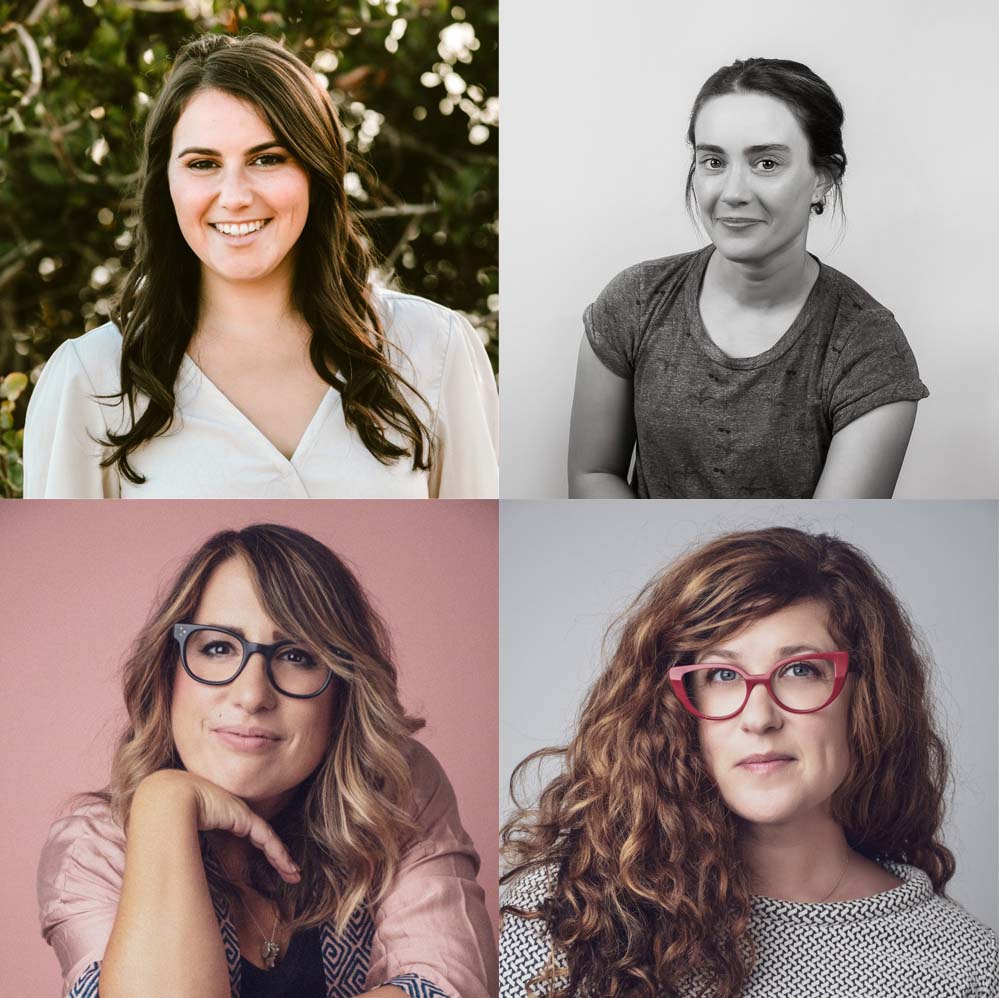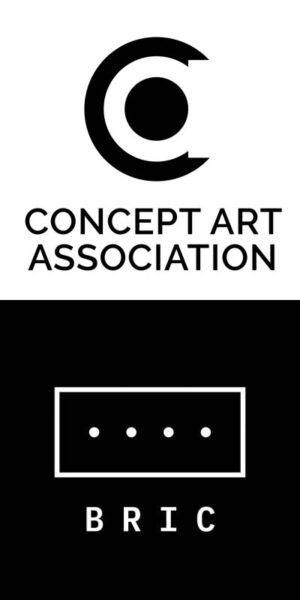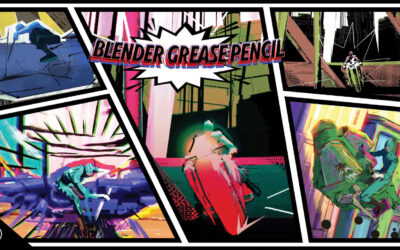The Concept Art Association was formed to “elevate and raise the profile of concept artists, their art, and their involvement in the entertainment industries.” Concept artists are integral to nearly every media industry, including film, video games, animation, and more. They’ve been working toward their mission for years by hosting the Concept Art Awards, held every year at Lightbox Expo.
Another way they work toward their mission is by collecting data about concept artists themselves. And in a collaboration with the BRIC Foundation and Dr. Yalda Uhls at UCLA, they recently released a major report at the most recent BRIC Summit, based on the data they’ve collected over the last few years. Here’s how the Concept Art Association describes this work:
At the Concept Art Association, we feel that concept and visual developments artists are some of the most under-represented below-the-line individuals working in entertainment, which is why we work so hard each year to gather as much data on those working in the field as possible. Our artist spreadsheets allow us to keep track of current working artists so we can include them our different initiatives such as our annual Concept Art Awards, mentorship program, and public speaking opportunities.
We hope that this study can bring a spotlight to the integral role these below the line individuals play in the production pipeline.
The report tracks diversity in the entertainment industry among concept and visual development artists. Recent research has consistently shown that audiences for films and streaming have changed in recent years, and that films with authentic diversity make more money. There have also been increases over the last few years in film cast diversity. But diversity matters in front of and behind the camera.
Below is a recording of the presentation Dr. Uhls gave at the 2023 BRIC Summit, going through the data that was collected and some of the research team’s conclusions.
Wacom also interviewed some of the researchers and organizers of the reporting, to get more insight into the data and their individual thoughts on what it means for the future of the media and entertainment industries, and for concept art specifically. An edited version of that interview is below.
Why did you specifically focus on concept and visual development artists for this report?
Nicole Hendrix, Producer, Co-founder of BRIC Foundation and Concept Art Association: I love data … but [it seemed like] we were the only people tracking this. Our whole organization exists because the world doesn’t understand what artists do in entertainment. Our core mission is to elevate and raise awareness to the role of artists within entertainment.
Rachel Meinerding, Creative Recruiter at 9B Collective, Co-Founder of Concept Art Association: This is probably one of the first times you’ve ever seen it, because we’re the only people tracking it.
What are some of the significant or surprising things that you noticed in the data set?
Lindsay Roberts, M.A., Fellow at UCLA Center for Scholars and Storytellers: What was shocking and really surprising when I saw it was that there was a decrease from 2018 to 2022 of concept and visual development artists of color. Gender [diversity] increased; there were more female artists. But people of color decreased … I think it’s a really important finding from the study.
Alison Mann, Co-Founder of BRIC Foundation, Talent Manager/Producer at Fourth Wall Management: I think for me … it was a little shocking because of all the work the studios are doing, or that they say they’re doing — but in actuality, the numbers tell a completely different story. To me, it shows that there is a break in their strategy and in the execution of it.
It can depend on the particular sector, as well. In VFX, numbers are way down, but in animation you have companies like Women in Animation, which aims to achieve gender parity in that sector by 2025. They’re in the studios, they can have a bit more control of giving people opportunity. We are still seeing a decline in people rising through the ranks and becoming creative leaders. To me, the study reflects progress, but also that we have a lot more work to do, on all fronts. It still feels like a “check the box scenario,” if opportunity is being given, and I don’t think the mentorship aspect is there yet, or how talent is treated once they’re in. That’s part of why the success rate isn’t as high as we want it to be.
Nicole Hendrix: Another thing that’s really fascinating to me is that a lot of women working in these fields were just hard to find, like they didn’t have a web presence. The internet’s not necessarily the most kind place to women, so there are many reasons that might not happen. But when women and people of color are not putting their portfolios up, and contact information, out there in the world on their own website or wherever, they are kind of not receiving those passive recruitment opportunities, and those speaking engagements, and all of those things. That also affects hiring.
Did your data set show any positive changes that have occurred in the industry?
Lindsay Roberts: From 2018, it was about 9-10% women in our data set, and then in 2022 it was like 34%. Gender representation has increased, especially in the animation sector, which I think is awesome because that kind of speaks to Women in Animation’s work — perhaps that’s one reason why we are seeing a change there.
Rachel Meinerding: Just anecdotally, I’ve been seeing women visual development artists now get art director positions, I’ve seen more women production designers and directors. Women are going from visual development to art directors, and we saw a lot more female production designers in animation the past couple of years.
Alison Mann: We’re seeing more women step up and feel confident that they have a place to pursue creative leadership roles … but not as many as I would like. I’m a talent rep now, and I work a lot with women filmmakers and creators — and [it’s still a challenge] getting them to believe in themselves or how they present themselves, to have conviction and not feel like they have to apologize for their vision. But we’re seeing that the more women and more diversity we can have, the more that others will feel like they can do it.
Nicole Hendrix: We have a mutual friend, Lauren Poly, and she gave a talk years ago while she was very pregnant, and she works in VFX. I know of at least three or four women who ended up committing into their careers, and ended up having babies, because they saw a pregnant woman doing it. All three of us are moms, and Rachel and I do an “Art of Balance” panel at most events. Younger women need to know that if they want a family, and they want a career in the arts, they can do it. That representation helps to fight negative narratives about motherhood and careers that can hold women back.

What specific things do you think need to happen in the near future for authentic diversity to truly take hold in the entertainment industry?
Alison Mann: I wholeheartedly feel that we need to adopt a kind of “sports recruiting” method into the creative fields. Like, we need to get into early education. We need people like recruiters from companies or colleges really starting to get to know all these different high schools and potential talent, and tracking them, meeting with them, meeting with their families, talking about opportunities, helping them figure out scholarships if they want to continue to going to a four-year college.
I think we are a industry of privilege. We expect people to do unpaid internships. How does that create accessibility for individuals who are first-generation college students, or who need to get a job straight out of high school to support their family? There are so many barriers to entry, and we need to break down that wall. Colleges and studios need to create time, space, and money in their budgets in order to do that.
BRIC was kind of born with this in mind. Something BRIC has done is create programs for high school students and early education. There’s research that by around the age of six, children — especially girls — already have a sense of confidence and self-esteem, and a concept of what they are capable of. We also need to fix how the government sees the creative economy — like, we need to figure out why we don’t have tax incentives here in the state of California. That will then help bring diversity into the workforce. Georgia has tax incentives. Europe, Canada, Australia, Israel, they all have tax incentives. They have filmmakers making shorts that they subsidized. Here in the United States, we don’t have that. So you see a diverse population of talent around the world, because they have access to funds to showcase and build their portfolios and skillsets.
Rachel Meinerding: I would like to talk about NDAs and artist contracts, about artists’ ability to show their portfolios. What’s happening right now, is a lot of artists don’t have the ability to show their work. Especially in video games, they’ll be working on a project for maybe three years, and the companies are so controlling over the narrative of the marketing, essentially, of their project, that especially if the project doesn’t end up getting fully produced, the artist then has three years’ worth of portfolio work that they cannot show.
This affects the passive recruitment that Nicole was talking about. To get hired, you have to be findable, you have to be searchable. People have to know what your work is. And if you don’t have up-to-date work that you can show, you’re then forced to spend your free time creating personal work so you have a portfolio to show. Who has extra free time to do more work outside of working hours? People who don’t have families to take care of, or who have wealth, etc. It ends up becoming a privilege issue again. If companies want to increase diversity, they need to let people show their work. Many recruiters will say, “I can’t find diverse candidates who are talented enough,” but they don’t let people show their work, so how would they even find them?
Nicole Hendrix: First, something is happening to girls. By age six, they are walking away from technology. And it’s impossible to separate a career in entertainment from a career in technology at this point in history. Someone has to figure out how to reach girls before age six. Second, alternative pathways. BRIC has an apprenticeship program for concept art, visual development art, even an employer consortium. Basically it’s allowing an additional way for people from historically excluded groups, and more women, to enter into the industry. And finally, women are getting hung up in the middle level. Maybe that means more senior apprenticeship and mentorship. But also, when a woman goes out on maternity leave, making sure that we’re not penalizing people for having children. Offering paternity leave as well, so we can shift the culture around who is expected to take care of families.
Want to learn more?

To look at the slide deck Dr. Yuhls presented during her presentation, click here.
Check out the BRIC Foundation at their website, Instagram, and Twitter. Check out the Concept Art Association at their website or on Instagram. Check out the Center for Scholars and Storytellers at their website, on Instagram, or on Twitter.
Learn more about Nicole Hendrix at her website or on LinkedIn. Learn more about Alison Mann at her LinkedIn, and more about Fourth Wall Management at their website. Learn more about Lindsay Roberts at her LinkedIn. Learn more about Rachel Meinerding at her LinkedIn.





